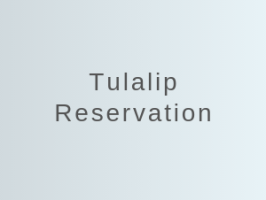OUTDOOR BURNING
Snohomish County Cities Join Outdoor Burning Ban Taking Effect July 1
Snohomish County cities have joined the Snohomish County Fire Marshal’s announcement of a Stage 1 burning ban, effective July 1st, 2024
EVERETT, Wash., June 28, 2024 – The Snohomish County Fire Marshal announced a Stage 1 outdoor burning ban for the unincorporated areas of Snohomish County effective July 1 through August 31, 2024. The ban may be extended depending on conditions. The Stage 1 burn ban suspends all residential burning, even if a permit has been issued. In addition to unincorporated Snohomish County, outdoor burning is also prohibited at all times in the cities of Arlington, Brier, Edmonds, Everett, Granite Falls, Gold Bar, Index, Lake Stevens, Lynnwood, Marysville, Mill Creek, Monroe, Mountlake Terrace, Snohomish, Stanwood, Sultan, and Woodway.
This restriction bans outdoor residential burning except for recreational and cooking fires. Recreational fires:
- Are less than three feet in diameter and two feet high.
- Are used for cooking or pleasure within an approved fire pit.
- Contain burning material kept below the top of the fire pit enclosure.
- Shall not be conducted within 25 feet of a structure or combustible materials. Conditions which could cause a fire to spread within 25 feet of a structure shall be eliminated prior to ignition.
- Shall be monitored at all times.
- Must have a water source readily available. At a minimum, this means a charged water hose or a five-gallon bucket of water.
Portable outdoor fireplaces shall be used in accordance with the manufacturer’s instructions and shall not be operated within 15 feet of a structure or combustible material.
The ban will remain in effect through the month of August and may be extended in the event of continuing high fire danger conditions. If the burn ban is extended, a new release will be issued.
In the event of a “Red Flag Warning” all outdoor burning is prohibited, including recreational fires, until further notice. A Red Flag Warning is a forecast warning issued by the National Weather Service in the United States to inform the public, firefighters, and land management agencies that conditions are ideal for wildland fire combustion and rapid spread. To the public, a Red Flag Warning means high fire danger with increased probability of a quickly spreading vegetation fire in the area within 24 hours.
With anticipated dry weather conditions, we urge the public to use great caution before lighting any recreational fires since wildfires are a significant risk across the region. If you have any doubts about safety, please don’t burn. Contact our Outdoor Burning Information Hotline at 425-388-3508 for updated information.
About Snohomish County Planning and Development Services
The Snohomish County Department of Planning and Development Services provides development and permit application review, building inspections, long range planning, code enforcement and houses the county Fire Marshal’s office. The department’s main office is located at 3000 Rockefeller Ave., Everett, WA 98201. For more information about Snohomish County Planning and Development Services, visit https://snohomishcountywa.gov/201.
To report illegal burning, call the non-emergency number 425-407-3999.
If the fire is an immediate threat to life or property, call 911.
- Recreational fires are ok (except during burn ban) in accordance with these guidelines and if less than 3 feet by 2 feet, at least 25 feet from a structure, with an attendee at all times and near a garden hose and shovel.
- Can only burn charcoal, dried firewood or manufactured fire logs
- Barbecues ok
- Yard debris burning, land clearing burning and garbage burning prohibited
- Yard Debris burning is ok (except during burn ban) in accordance with these guidelines. A copy of guidelines must be posted onsite.
- Recreational fires and barbecues ok
- Land clearing burning and garbage burning prohibited
Check this map to see if you are located within the Urban Growth (UGA)/No Burn Area.
Review a summary of the Marysville Fire District's burning guidelines here.
For updated BURN BAN information, call the Outdoor Burning Information Hotline at 425-388-3508.
Types of Burn Bans
Fire Safety burn bans may be issued for safety during hot and/or dry conditions. The Marysville Fire District follows fire safety bans issued by the Snohomish County Fire Marshal. If a burn ban is issued in Snohomish County, that ban is effective within the City of Marysville and the entire Marysville Fire District service area.
Air Quality burn bans are issued by the Puget Sound Clean Air Agency to protect air quality. These bans are usually enacted during cooler months when the air is stagnant but can also be issued due to smoky conditions during warmer seasons. Find more information on what types of burning are limited during an air quality burn ban here.
DNR burn bans are issued by the Washington State Department of Natural Resources (DNR) to reduce human-caused wildfires during extremely hot and dry conditions. When a burn restriction is in place, outdoor fires are prohibited on all state, county, city and private land under DNR fire protection.
You can find updated information on all Snohomish County burn bans here.
CONTACT US
Marysville Fire District
1635 Grove Street
Marysville, WA 98270
(360) 363-8500







